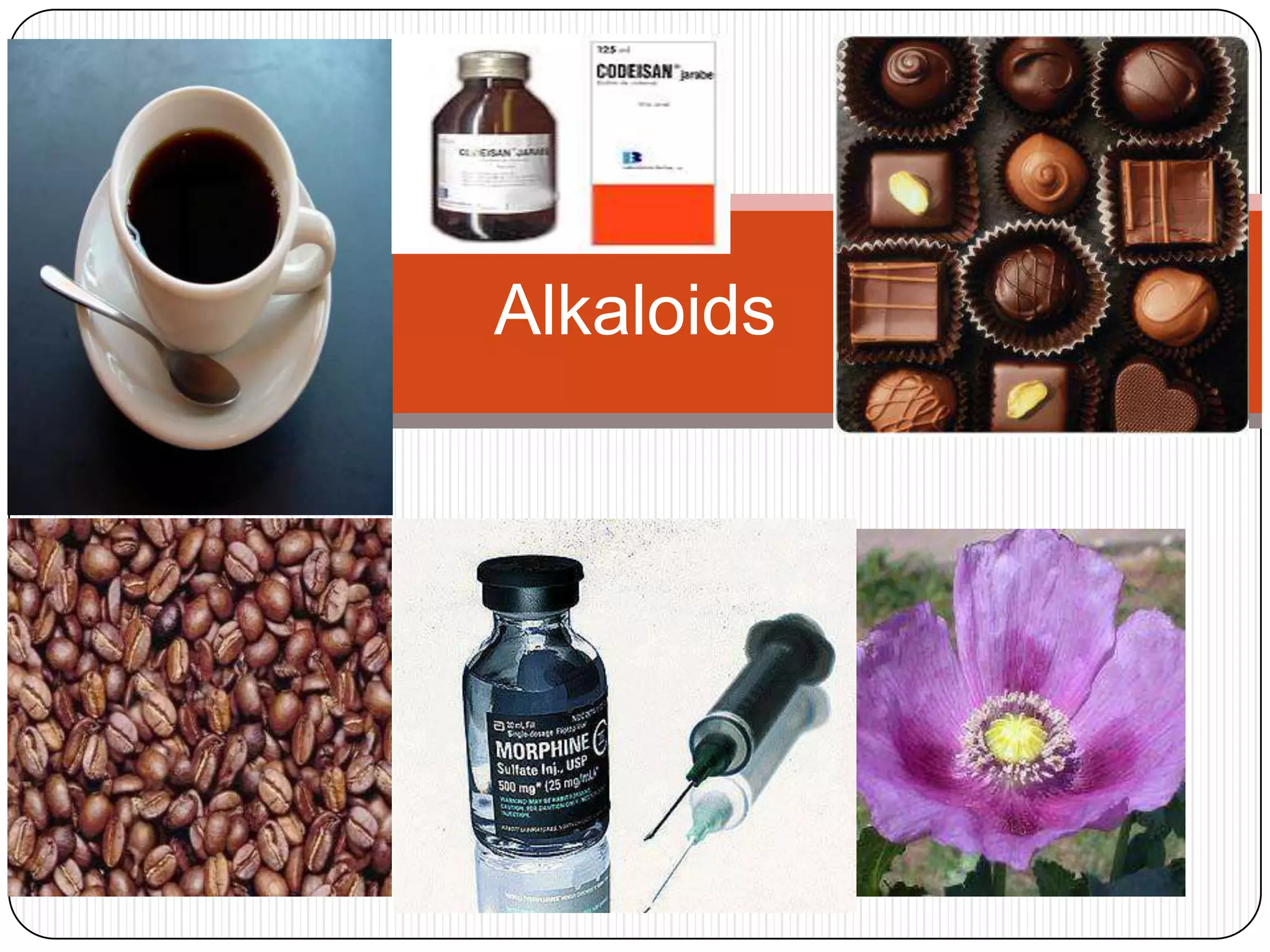- Alkaloids are basic nitrogen-containing compounds found in plants, animals, and microorganisms that often have physiological effects.
- They are classified based on their biological origin, biosynthetic pathway, and chemical structure, with the main classes being proto, typical, and pseudo alkaloids.
- Common alkaloids include morphine, codeine, caffeine, and cocaine. Extraction methods take advantage of alkaloids' basic properties, using organic solvents to extract them from plant materials into aqueous solutions as salts.






![• Alkaloids occur in all plant
parts, but are usually
localized in one organ (e.g.
the bark or seeds).
• Within the plant, [alkaloid]
can vary widely from part to
part –some parts may contain
no alkaloids.
• Occasionally, different
alkaloids also form in different
parts of the plant.
• Alkaloid concentrations occur
in wide ranges –e.g.
Madagascar periwinkle
contains 3g per (anti-cancer)](https://image.slidesharecdn.com/alkaloids-131001101508-phpapp02/75/Alkaloids-7-2048.jpg)




















